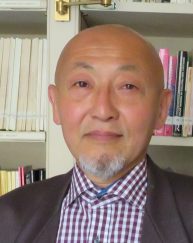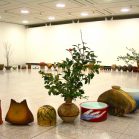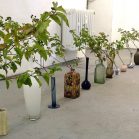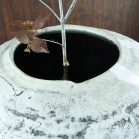 Special event
Special eventThursday 18 May 2017
6:00pm – 8:00pm
Takaya Fujii: Ikebana: ‘The Way of the Flower’
13/14 Cornwall Terrace, Outer Circle (entrance facing Regent's Park), London NW1 4QP
Organised by the Daiwa Anglo-Japanese Foundation
“Ikebana is not a mere decoration, it is an art. Ikebana is not for Japan alone, it is for the whole world.” – Sofu Teshigahara (1900-1979)
The word ikebana (生け花) comes from the Japanese “ikeru” (生ける) which means to arrange, and “hana” (花) which means flower. Ikebana is a beautiful, sophisticated art form emphasising form and balance whilst generating a peaceful, meditative quality to not only the designer, but also anyone looking upon the arrangements. It can be literally translated as “living flowers”. Ikebana is also known as Kado or “way of the flower”.
Ikebana has long been the provenance of Japanese royalty and samurai families, with teaching being controlled by the hierarchical monks of the major temples in Japan. For hundreds of years, it was not available to the ordinary folk. The secrets of ikebana had been locked away within the inner cloisters of the upper echelons of Japanese society; only in more recent times have these been more freely distributed.
Takaya Fujii’s ikebana has a significance far beyond its role as just art. It bridges Japanese Buddhist and Shintoistic principles of life and it reminds us that the impermanent beauty of nature should be honoured. Salt and water are the principal elements of purification and longevity for Fujii’s work.
A Kyoto native, Fujii’s “Salty Ikebana” shows how important salt was for people in Kyoto for purification ceremonies and food conservation. The artist’s ikebana process is equally important as its display. A series of meditative walks through time and nature is part of the entire ritual. We were delighted to host this special exhibition of his work and artist talk, which you can watch below.
About the contributors

Takaya Fujii
Takaya Fujii is an artist, independent curator and master of ikebana and nihonga (traditional Japanese painting). Born and bred in Kyoto, Fujii studied at Kyoto City Fine Art University. After graduation, Fujii embarked on a series of trips outside Japan, with the aspiration to meet and share artistic knowledge with his counterparts. Since then, he has built long-lasting friendships around the world, becoming not only the core of his art, but also his way of life.
Amongst many artistic achievements and awards, Takaya obtained a scholarship from the Japanese Agency of Cultural Affairs in 1995 to study at Dusseldorf Kunst Akademie, where he studied under Prof Konrad Klapheck. His artistic achievements and his interest to learn art through other cultures convinced Prof Klapheck to invite Fujii as his guest student for another three years. It was then that Fujii developed the idea of creating an art centre in his hometown, Kyoto, as an international artist hub. In 1999, Kyoto-Weissraum was established as a non-profit art organisation that aims to build bridges between Japanese and international artists and institutions. Since then, the centre has been involved in several exchange research programmes with international institutions and made its facilities accessible to local and international artists. Fujii lives and works in Kyoto and Dusseldorf.




